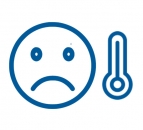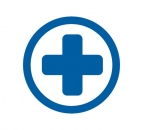Section 3: Symptoms & Emergency Care


Symptoms & Emergency Care
Common COVID-19 symptoms may appear 2–14 days after exposure, and include:
- Fever
- Cough
- Shortness of breath or difficulty breathing
- Repeated shaking with chills
- Fatigue
- Aches and pains
- Headache
- Conjunctivitis (inflammation around the eye)
- Loss of taste and/or smell
- Sore throat
- Congestion or runny nose
- Nausea or vomiting
- Diarrhea
- Rash on skin, or discoloration of fingers or toes
*This is not a complete list of symptoms.
*A United Kingdom study found that more than 80% of those who tested positive for COVID-19 were experiencing no symptoms at the time of testing. The researchers note that little is known about individuals who are without symptoms while testing positive, and may potentially be “silent spreaders.”

Emergency Care
Seek medical attention immediately if you have:
- Trouble breathing
- Ongoing pain or pressure in the chest
- Confusion and/or difficulty waking up and staying alert
- Loss of speech or movement
- Bluish lips and/or face
*This is not a complete list of serious symptoms.
Call 911 if you think you’re having a medical emergency. Tell the 911 operator that you have MS and that you have, or need to be tested for, COVID-19. If possible, put on a face mask before emergency medical personnel arrive.

